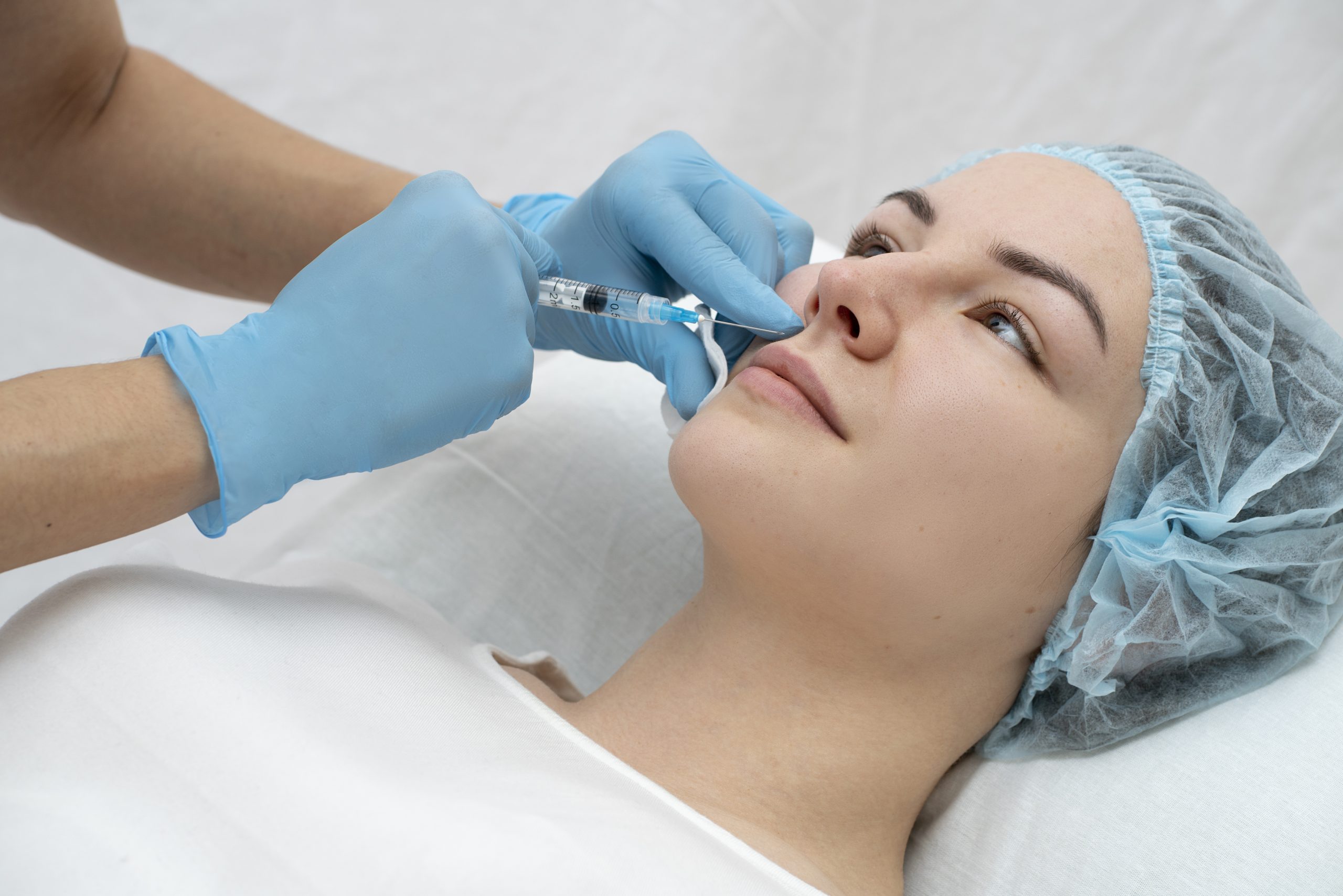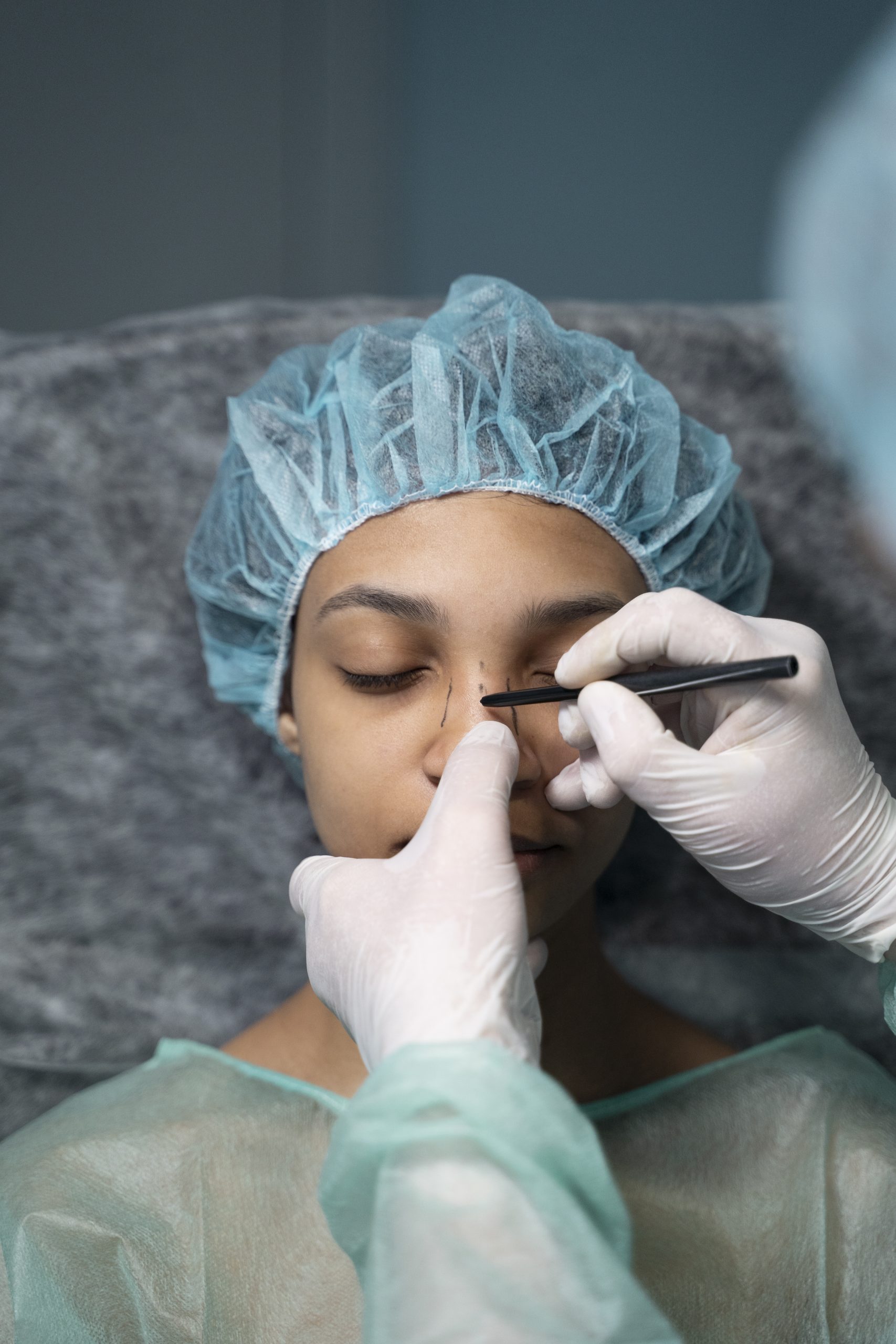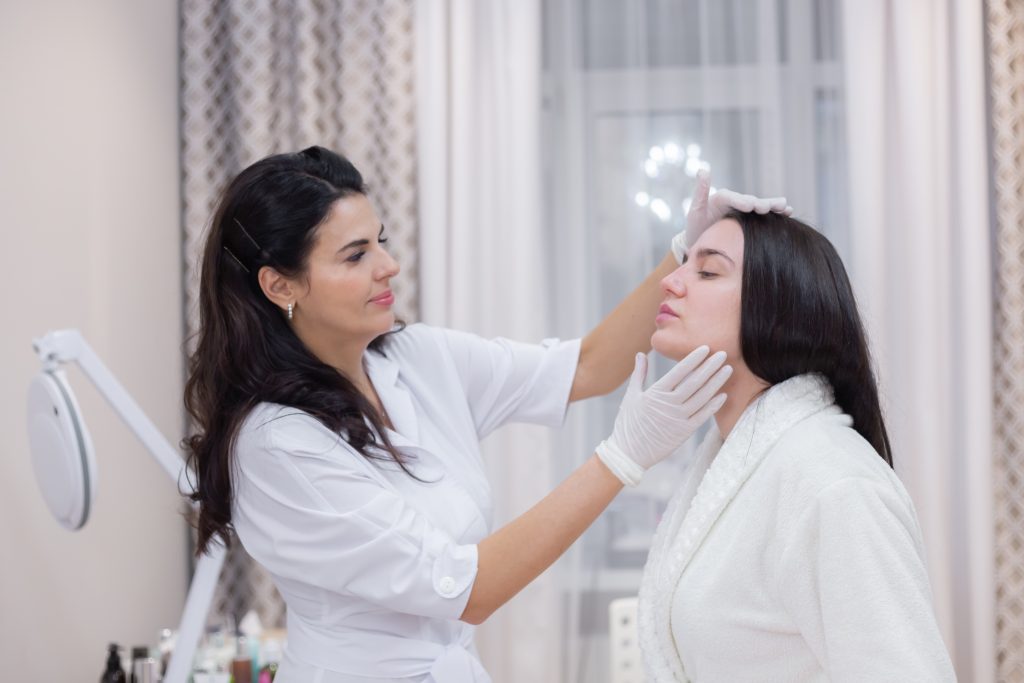Rhinoplasty, commonly known as a nose job, is a popular cosmetic procedure that can reshape the nose for aesthetic or functional reasons. There are various types of rhinoplasty, each tailored to meet specific needs and desired outcomes.
Let’s explore the different types of rhinoplasty, including their techniques, benefits, and ideal candidates. Whether you’re considering a subtle tweak or a complete transformation, understanding the options available can help you make an informed decision.
Key Takeaways
- Open rhinoplasty offers greater visibility for complex reshaping.
- Closed rhinoplasty leaves no visible scars and has a quicker recovery.
- Suture lift rhinoplasty is a minimally invasive option for subtle changes.
- Ethnic rhinoplasty considers cultural factors for tailored results.
- Non-surgical rhinoplasty provides temporary enhancements with fillers.
Open Rhinoplasty
Open rhinoplasty is a pretty common procedure, and it might be just what you need to get the results you’re after. Basically, it involves making a small incision on the columella (that’s the bit of skin between your nostrils) to lift the skin and expose the underlying bone and cartilage.
It sounds a bit intense, but it gives the surgeon a really clear view of what they’re doing, which can be super helpful for more complex cases.
Overview of the Procedure

Okay, let’s break down what actually happens during an open rhinoplasty.
- First off, you’ll be under general anaesthetic, so you won’t feel a thing.
- The surgeon will then make that small incision on your columella. This allows them to gently lift the skin and soft tissues covering your nose, giving them full access to reshape the bone and cartilage underneath.
The great thing about this approach is that the surgeon can see everything clearly, which means they can make really precise adjustments. Once the reshaping is done, the skin is carefully re-draped, and the incision is closed with sutures. You’ll probably have a splint on your nose for about a week to help it heal in the right shape.
Benefits of Open Rhinoplasty
Why choose open rhinoplasty over other methods? Well, there are a few key advantages:
- Greater Precision: The open approach allows for more accurate reshaping, especially when dealing with complex nasal deformities.
- Improved Access: Surgeons have a much better view of the nasal structures, making it easier to perform intricate work.
- Versatility: It’s suitable for a wide range of nasal issues, from correcting breathing problems to improving cosmetic appearance.
Open rhinoplasty is often preferred when significant reshaping or reconstruction is required. It provides the surgeon with the necessary visibility and control to achieve optimal results.
Ideal Candidates for Open Rhinoplasty
So, who is the ideal candidate for this type of procedure? Generally, it’s people who:
- Need significant nasal reshaping or reconstruction.
- Have complex nasal deformities, such as a severely deviated septum or a collapsed nasal valve.
- Have had previous rhinoplasty and require revision surgery.
If you’re unsure whether open rhinoplasty is right for you, the best thing to do is book a consultation with a qualified surgeon. They’ll be able to assess your individual needs and recommend the most appropriate course of action.
Closed Rhinoplasty
Closed rhinoplasty, also known as endonasal rhinoplasty, is a surgical technique where all incisions are made inside the nostrils. This approach offers the advantage of no visible external scarring. It’s often chosen for cases requiring less extensive reshaping of the nose.
Understanding Closed Techniques
Here’s what happens:
- The surgeon makes incisions inside the nostrils to access the underlying bone and cartilage.
- The skin is then separated from these structures to allow for reshaping.
- The techniques used can include removing cartilage, reshaping bone, or adding grafts to achieve the desired outcome.
Because the approach is more limited, surgeons need to have a really good understanding of nasal anatomy and be skilled at working through these small incisions.
Advantages of Closed Rhinoplasty
One of the biggest draws of closed rhinoplasty is the lack of external scars. But there are other potential benefits too:
- Reduced swelling and bruising compared to open rhinoplasty.
- Potentially shorter operating time.
- Faster initial recovery in some cases.
It’s important to remember that while closed rhinoplasty offers these advantages, it might not be suitable for every patient. The best approach depends on the specific changes you want to make to your nose.
Who Should Consider Closed Rhinoplasty
Closed rhinoplasty is often a good option for people who:
- Need only minor corrections to the nasal bridge or tip.
- Want to avoid external scarring.
- Are looking for a potentially quicker recovery.
It’s less suitable for complex nasal reconstructions or cases where significant reshaping is needed. A consultation with a skilled surgeon is essential to determine if closed rhinoplasty is right for you.
Suture Lift Rhinoplasty
So, you’re thinking about a nose job, but the idea of going under the knife isn’t exactly appealing? Well, you might want to consider a suture lift rhinoplasty. It’s becoming a pretty popular option, and for good reason. It’s less invasive than traditional surgery, meaning less downtime and fewer risks. Let’s get into the details, shall we?
Minimally Invasive Approach
So what exactly is a suture lift? Basically, it’s a way to reshape your nose using special threads, or sutures, inserted under the skin.
- The surgeon uses these sutures to lift and refine the shape of your nose, without making any major cuts. It’s all done through tiny entry points, which means minimal scarring.
Think of it like contouring, but with longer-lasting results. It’s a great option if you’re looking for subtle changes, like lifting a droopy tip or refining the bridge.
Recovery and Results
One of the biggest perks of a suture lift is the recovery time. Because it’s less invasive, you can expect to be back on your feet much sooner than with traditional rhinoplasty. You’ll likely have some swelling and bruising, but it usually subsides within a week or two.
Results aren’t as dramatic as with surgery, but they can still make a noticeable difference. And while they’re not permanent, they can last anywhere from one to two years, depending on your skin type and lifestyle. It’s a good way to test the waters before committing to something more permanent.
Best Candidates for Suture Lift
So, who’s the ideal candidate for this procedure? Well, it’s best suited for people who want subtle improvements to their nose shape. If you’re looking for major changes, like correcting a severely deviated septum or significantly reducing the size of your nose, then traditional surgery might be a better option.
Generally, good candidates have realistic expectations and are in good overall health. It’s also important to have enough skin elasticity to allow for the sutures to work effectively. A consultation with a qualified surgeon is always the best way to determine if a suture lift is right for you.
Ethnic Rhinoplasty
Ethnic rhinoplasty? It’s a term you hear thrown around, but what does it really mean? Basically, it’s nose surgery that considers the unique features and cultural background of the person having the procedure.
It’s not about erasing someone’s heritage; it’s about enhancing their natural beauty while respecting their ethnic identity. I think it’s more about understanding what someone wants and what’s possible, rather than just knowing where they come from.
Cultural Considerations
Okay, so cultural considerations are a big deal. It’s all about understanding that beauty standards vary across different cultures. What’s considered an ideal nose in one culture might be totally different in another.
So, a surgeon needs to have a good chat with you to understand your background and what you’re hoping to achieve. It’s about finding a balance between your personal goals and your cultural identity. It’s a bit like tailoring a suit – it needs to fit you perfectly, both physically and culturally.
Tailored Techniques
So, when it comes to the actual surgery, it’s not a one-size-fits-all situation. Different ethnicities often have different nasal structures, so the techniques used need to be adapted accordingly.
For example, someone of Asian descent might have a flatter nasal bridge, while someone of African descent might have wider nostrils. The surgeon needs to be skilled in a variety of techniques to address these differences and create a natural-looking result. It’s like being a sculptor – you need to know how to work with different materials to create the perfect shape.
Expected Outcomes
Let’s be real, managing expectations is key. It’s important to have a clear idea of what’s achievable with ethnic rhinoplasty. The goal isn’t to give you a nose that looks completely different from your original features. It’s about refining and enhancing what you already have, while maintaining your ethnic identity.
A good surgeon will be honest with you about what’s possible and will work with you to create a realistic plan. It’s a collaborative process, and the best results come when you and your surgeon are on the same page.
Non-Surgical Rhinoplasty

Non-surgical rhinoplasty, often called liquid rhinoplasty, is becoming a really popular alternative. It’s quick, relatively painless, and involves using injectable fillers to reshape your nose. Sounds pretty good, right?
Filler Techniques Explained
Okay, so how does it actually work? Basically, a doctor uses dermal fillers – usually hyaluronic acid – to smooth out bumps, fill in dips, or even lift the tip of your nose. It’s all about creating a more balanced and symmetrical look.
The filler is injected in small amounts, allowing for precise adjustments. The whole thing usually takes less than half an hour, and you can see the results almost immediately. It’s pretty amazing, actually.
Temporary Results and Maintenance
Now, here’s the thing: non-surgical rhinoplasty isn’t permanent. The fillers eventually break down, so you’ll need to get touch-ups to maintain the shape.
Typically, results last anywhere from six months to two years, depending on the type of filler used and how your body metabolises it. It’s a bit of a commitment, but it’s a good way to test the waters before considering a more permanent surgical option.
Who is a Good Candidate?
So, who is this procedure actually good for? Well, it’s ideal for people who want to correct minor imperfections, like a small bump on the bridge of their nose or a slightly droopy tip. It’s also a good option if you’re not quite ready for surgery or if you want to see what a change would look like before committing to something permanent.
However, it’s not suitable for everyone. If you have significant structural issues with your nose, like a severely deviated septum, surgery is probably a better bet.
It’s important to have realistic expectations. Non-surgical rhinoplasty can make subtle improvements, but it can’t achieve the same dramatic results as surgery. It’s also crucial to choose a qualified and experienced practitioner to minimise the risk of complications.
Septoplasty
So, you’re having trouble breathing? Maybe you’ve heard about a septoplasty and are wondering if it’s right for you. Well, let’s break it down. A septoplasty is a surgical procedure designed to correct a deviated septum. The septum is that wall of cartilage and bone inside your nose that separates the two nostrils. When it’s crooked, it can cause all sorts of problems.
Purpose of Septoplasty

The main goal of a septoplasty is to improve airflow through your nose. A deviated septum can block one or both nasal passages, leading to difficulty breathing, frequent sinus infections, nosebleeds, and even sleep disturbances.
Septoplasty aims to straighten and reposition the septum, opening up those airways and making it easier to breathe. It’s not just about comfort; it’s about improving your overall quality of life.
Differences from Cosmetic Rhinoplasty
It’s easy to confuse septoplasty with rhinoplasty, but they’re actually quite different.
- Rhinoplasty, often called a “nose job”, is primarily concerned with changing the external shape of your nose for cosmetic reasons.
- Septoplasty, on the other hand, focuses on the internal structure of the nose to improve its function.
That said, sometimes people get a septorhinoplasty, which combines both procedures to address both breathing issues and cosmetic concerns in one go. It’s all about what you need and what you’re hoping to achieve.
Recovery Process
Okay, let’s talk about what to expect after the surgery. The recovery from a septoplasty is generally manageable, but it’s important to follow your surgeon’s instructions carefully. Here’s a rough idea of what you might experience:
- Initial Days: Expect some nasal congestion and discomfort. You might have some packing in your nose for a day or two to support the healing process.
- First Week: Bruising and swelling around the nose and eyes are common. Pain medication can help manage any discomfort.
- Weeks 2-4: Most of the swelling and bruising will subside. You’ll gradually be able to resume normal activities, but avoid strenuous exercise.
- Full Recovery: It can take several months for the nasal tissues to fully heal and for you to see the final results. Patience is key!
It’s important to remember that everyone’s recovery is different. Listen to your body, attend all follow-up appointments, and don’t hesitate to contact your surgeon if you have any concerns. With proper care, you can look forward to breathing easier and feeling much better.
Revision Rhinoplasty
Revision rhinoplasty is all about correcting issues from a previous nose job, and it’s more common than you might think. It’s not about assigning blame; it’s about finding solutions and getting you the results you hoped for the first time around. It’s a journey, and sometimes it takes a couple of tries to reach your destination.
Reasons for Revision
There are loads of reasons why someone might consider revision rhinoplasty.
- Maybe the cosmetic outcome wasn’t what you expected – perhaps the nose still looks asymmetrical, or the tip is too pinched.
- Or, it could be a functional issue, like difficulty breathing, that wasn’t resolved or was even made worse by the initial surgery.
Sometimes, it’s simply that the nose doesn’t quite ‘fit’ your face the way you envisioned. Whatever the reason, it’s important to remember that you’re not alone, and there are options available.
Challenges in Revision Surgery
Okay, let’s be real – revision rhinoplasty can be a bit more complex than the first surgery. The anatomy has already been altered, there might be scar tissue, and there could be limited cartilage available for grafting.
This means the surgeon needs to be extra skilled and have a really good understanding of what’s going on under the skin. It’s like trying to fix a puzzle that’s already been glued together – it takes patience, precision, and a bit of artistry.
Consultation and Planning
The consultation is arguably the most important part of revision rhinoplasty. It’s where you and the surgeon discuss your concerns, expectations, and what’s realistically achievable. The surgeon will examine your nose, assess the underlying structure, and talk about the best approach to achieve your goals.
This might involve using cartilage grafts from other parts of your body (like the ear or rib) to rebuild or reshape the nose. It’s a collaborative process, and it’s all about creating a plan that’s tailored to your specific needs and anatomy.
It’s important to have realistic expectations about what revision rhinoplasty can achieve. While it can often significantly improve the appearance and function of the nose, it’s not always possible to achieve perfection. The goal is to create a nose that looks natural, fits your face, and functions well, and a good surgeon will be honest about what’s possible.
Conclusion
Understanding the various types of rhinoplasty can help you make an informed decision about your options. Whether you’re looking for a subtle enhancement or a more significant change, there’s a procedure that can meet your needs. It’s essential to consult with a qualified surgeon who can guide you through the process and help you choose the best approach for your unique situation.
Remember, the goal is to achieve a result that not only enhances your appearance but also boosts your confidence. Don’t hesitate to reach out for more information or to discuss your concerns with a professional.
Frequently Asked Questions
What is open rhinoplasty?
Open rhinoplasty is a type of nose surgery where the surgeon makes a small cut on the skin between the nostrils. This lets them see inside the nose better and make precise changes.
What are the advantages of closed rhinoplasty?
Closed rhinoplasty involves making cuts inside the nose, which means there are no visible scars. It usually leads to less swelling and can be quicker to recover from.
What is a suture lift rhinoplasty?
A suture lift rhinoplasty is a non-surgical method that uses special stitches to lift and shape the nose. It’s less invasive and has a shorter recovery time, but results may not be as dramatic.
What does ethnic rhinoplasty involve?
Ethnic rhinoplasty is tailored to fit the unique features of different ethnic backgrounds. Surgeons consider cultural aspects to create a nose shape that looks natural and fits the person’s face.
How does non-surgical rhinoplasty work?
Non-surgical rhinoplasty uses fillers to change the shape of the nose without surgery. It’s a quick procedure, but the results are temporary and need regular touch-ups.
What is septoplasty and how is it different from rhinoplasty?
Septoplasty is a surgery that fixes a deviated septum, which can cause breathing problems. Unlike rhinoplasty, which focuses on appearance, septoplasty mainly aims to improve function.





